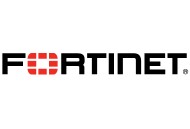
Nonetheless, state governments are slowly but surely moving to the cloud: 28% already have a cloud migration strategy in place, and 55% have one under development.
Cloud now ranks as the number-two priority of state IT leaders, surpassed only by security.
Digital transformation efforts can pay big dividends for states, but as data moves between agency silos, decentralized networks, legacy applications, mobile apps, and multiple clouds, attack surfaces grow far beyond agency walls, rendering traditional peripheral security insufficient.
As state governments consolidate IT services with cloud solutions, an opportunity is emerging to deliver Security-as-a-Service (SECaaS) to agencies and departments. However, to maintain transparency and control, a comprehensive and unified approach to security is essential. In a recent survey by the Center for Digital Government, those states that received an “A” grade for their digital transformations also had a strong focus on cybersecurity.
Learn more by reading the full whitepaper HERE.








